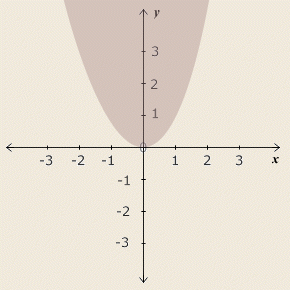Functions whose graphs are curves have varying slopes, and thus more complicated derivatives. The graph of y = x2 looks roughly like:

The slope starts gently and increases. At 0, it's flat. As x increases to about ½, it has begun to rise; at 1 it rises more steeply. At 2 it's steeper still — the y value runs right off the graph.